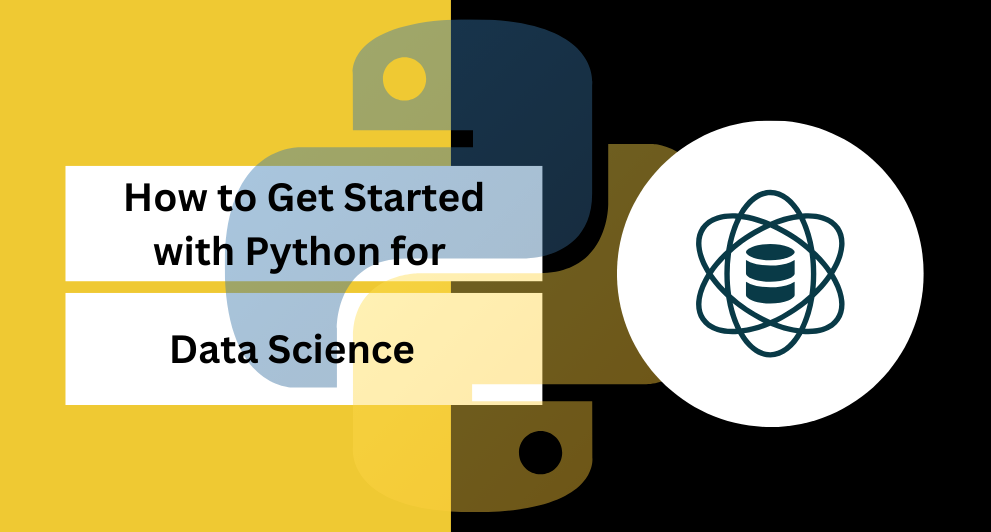
Python has become the go-to language for data science due to its simplicity, versatility, and rich ecosystem of libraries designed specifically for data manipulation, analysis, and visualization. For anyone aspiring to enter the data science field, learning Python is an excellent starting point. This article will guide you through the essential steps to kickstart your journey with Python for data science.
1. Install Python and Set Up Your Environment
The first step in starting with Python for data science is to set up your programming environment. You’ll need to install Python on your machine, which you can download from python.org.
To manage data science projects more effectively, consider using Anaconda, a popular distribution that includes Python, Jupyter Notebook, and essential data science libraries. It’s an all-in-one package that simplifies the setup process and lets you dive straight into coding.
2. Learn the Basics of Python Programming
Before diving into data science concepts, familiarize yourself with the basics of Python programming. Here are the fundamental topics you should cover:
- Data Types: Understand basic data types like integers, floats, strings, and Booleans.
- Variables and Operators: Learn to define variables and use operators for arithmetic, comparison, and logical operations.
- Control Flow: Master
ifstatements,forandwhileloops, and how to control program flow. - Functions: Learn to create reusable blocks of code using functions and understand how to pass and return values.
- Data Structures: Study essential data structures such as lists, dictionaries, sets, and tuples.
Websites like Codecademy or W3Schools offer free Python tutorials that can help you get comfortable with these concepts.
3. Master the Key Libraries for Data Science
Once you have a handle on the basics, it’s time to dive into the core Python libraries used in data science. Here are some of the most crucial ones:
- NumPy: This library is essential for numerical and array-based calculations, enabling efficient mathematical operations on large datasets.
- Pandas: Pandas is invaluable for data manipulation and analysis. It allows you to load, manipulate, and analyze data quickly, making it a core tool for data scientists.
- Matplotlib and Seaborn: These are visualization libraries that help you create charts, plots, and graphs to represent data insights visually.
- Scikit-Learn: Scikit-Learn is one of the most popular libraries for machine learning, offering tools for data preprocessing, model selection, and evaluation.
Practice using these libraries by loading sample datasets and applying various functions. Working through beginner-friendly datasets on platforms like Kaggle can help reinforce your skills.
4. Practice Data Analysis with Pandas
Data analysis is a core component of data science, and Pandas is the perfect tool for it. Start by learning how to load datasets, explore data with summary statistics, and perform data cleaning (e.g., handling missing values or outliers).
Practice creating data frames, filtering data, grouping and aggregating, and transforming data. These are foundational tasks in data analysis, and mastery of these techniques will set you up for more complex data projects. Try analyzing small, publicly available datasets and using Pandas to clean and explore the data.
5. Learn Data Visualization for Better Insights
Data visualization helps communicate insights effectively. Start by learning Matplotlib, a Python library for creating static, animated, and interactive visualizations. Then, move on to Seaborn, which builds on Matplotlib and provides beautiful visualizations with simpler syntax.
Practice by creating different types of charts—line graphs, bar charts, scatter plots, and histograms. These visualizations will help you see trends, patterns, and anomalies in data, making it easier to derive meaningful insights.
6. Get Comfortable with Jupyter Notebooks
Jupyter Notebook is the preferred tool for data scientists to document code, visualize data, and narrate insights in one place. With Jupyter, you can write code, see the output immediately, and add explanations and notes in Markdown, which makes it ideal for data storytelling.
Experiment with Jupyter Notebooks to organize your code and visualize your data analysis steps. You can install Jupyter as part of the Anaconda package and practice working within its environment.
7. Explore Machine Learning Concepts with Scikit-Learn
As you progress in data science, you’ll likely want to apply machine learning to extract insights from data. Scikit-Learn is a user-friendly library that provides tools for implementing machine learning models.
Start by learning about basic machine learning algorithms such as linear regression, decision trees, and k-nearest neighbors. Scikit-Learn offers tools for model evaluation, feature scaling, and model selection, allowing you to experiment with building models from scratch and evaluating their performance on data.
8. Work on Data Science Projects
To truly cement your skills, start working on data science projects. Real-world projects allow you to apply everything you’ve learned in a meaningful way. Here are some beginner-friendly project ideas:
- Exploratory Data Analysis (EDA): Choose a dataset and analyze it using Pandas and Matplotlib. Perform tasks like finding correlations, visualizing distributions, and generating insights.
- Customer Segmentation: Use clustering techniques to group customers based on their purchasing patterns.
- Predictive Analysis: Build a simple predictive model, like predicting house prices, using a regression algorithm.
- Sentiment Analysis: Use natural language processing (NLP) techniques to classify text data, like positive or negative sentiment in social media comments.
These projects will give you hands-on experience and prepare you to tackle more advanced topics in data science.
9. Join a Data Science Community
Data science communities are fantastic resources for learning, sharing knowledge, and getting feedback. Join forums and platforms like Kaggle, Stack Overflow, and Reddit’s data science subreddits to connect with other data science enthusiasts. You can ask questions, participate in discussions, and even collaborate on projects.
Being part of a community can accelerate your learning and help you stay motivated by engaging with like-minded individuals.







